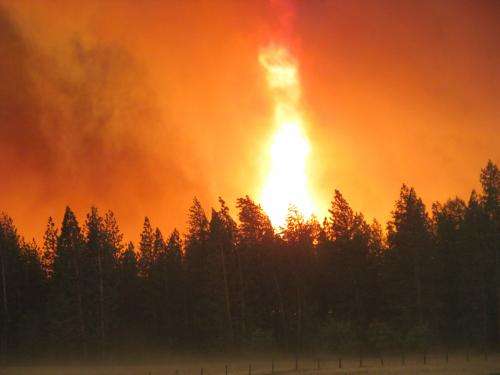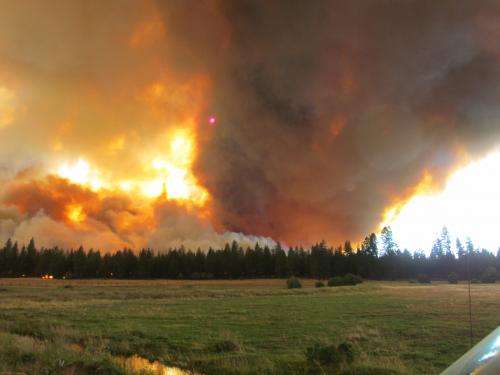The science behind fire tornados

Meteorology meets fire science in a recent Weatherwise article exploring the violent whirlwinds that are known to wreak havoc in the nation's west.
Popularly known as "fire devils," "firenadoes," and "fire storms," fire whirls are described as, "Rapidly rotating columns of rising hot air that contain flames, smoke, and combusting debris." Once formed, they take on lives of their own, in what has been called a "dramatic manifestation of atmospheric instability," creating violent whirlwinds in a range of sizes, some of seemingly tornadic strength.
Co-authored by Drs. Bradley M. Muller and Christopher G. Herbster, the article, "Fire Whirls: Twisters That Light the Sky" is featured on the cover of the November/December issue of Weatherwise Magazine.
Dr. Bradly Muller describes his experience during the authors' research of fire whirls near Mt. Lassen, CA earlier this year.
"We were fascinated to observe 40-inch-diameter snapped off trees, sand-blasted bark, and trees wrapped tight by roofing metal," Muller said.
Fire whirls often derive from wildland fires, oil fires, and urban conflagrations. It is their unpredictability and rapidity that makes them so dangerous, making it extremely important in the firefighting community.
This article explores the science behind fire whirls, how they come to be, and how researchers are trying to combat them and improve public safety.

More information: "Fire Whirls: Twisters That Light the Sky." Weatherwise. DOI: 10.1080/00431672.2014.960326
Provided by Taylor & Francis




















